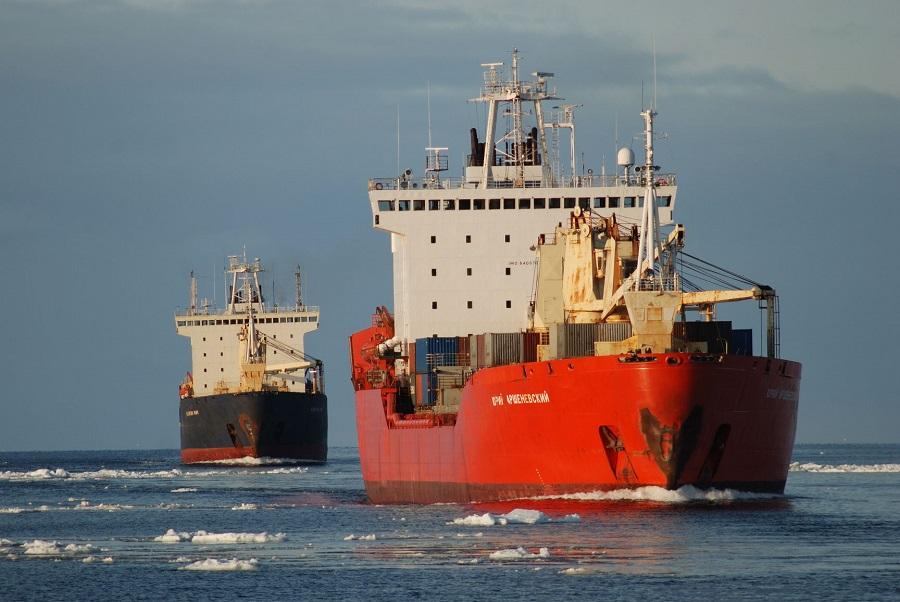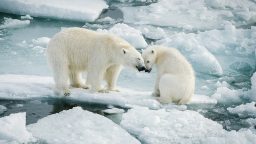
Photo: Yaroslav Nikitin / GeoPhoto
Myth No. 4. The myth of the shelf and the terrible Convention
In 1997, Russia ratified the 1982 Convention on the Law of the Sea. Today it is difficult to establish the logic of ratification – let’s say the United States has not done this so far. To understand, it is necessary to recall, probably, the situation of the 1990s, in particular, how the company “Leg” arrested Russian ships for debts… Perhaps the Convention helped simplify the solution of many relevant issues at that time.
By becoming a party to the convention, Russia has received the right to immediately release ships that have recently been arrested or even sold for a song at auction due to environmental pollution, violations of fishing rules and others established in ports.
According to the convention, the International Tribunal for the Law of the Sea has been established, where Russia is also represented. For Russia, the right of the tribunal to make decisions on the immediate release of ships and crews from arrest is of particular importance. The Tribunal also has the right to resolve disputes concerning the use of the seabed, not only between States, but also between individuals and legal entities.
The advantages Russia receives from participating in the convention certainly prevail over the relatively small material costs associated with participating in it. It is no coincidence that as of November 1, 2024, 108 states have ratified the convention, including Japan, China, the Scandinavian countries, France and Germany.
The main thing that the Convention is accused of today is that its ratification forced the abandonment of the former sectoral division of the Arctic, when the Soviet polar possessions extended to the North Pole, bounded in the west and east by meridians passing through the extreme points of the country’s coast. But the Convention says nothing about the Arctic borders. And here everything is more complicated than it is served in the press and other “horror stories”.
Strictly speaking, there is not a line about the Arctic in the Convention at all, except for the article on “ice-covered areas”. There is the following:
- The concept of “territorial sea”, which is subject to the sovereignty of the State, including “the airspace over the territorial sea, as well as its bottom and subsoil” (art. 2). The width of the territorial sea is defined within 12 nautical miles.
- The concept of an “exclusive economic zone”. An exclusive economic zone is “an area located outside the territorial sea and adjacent to it …” (article 55). In this zone, the coastal State has:
(a) Sovereign rights for the purpose of exploration, exploitation and conservation of natural resources, both living and non-living, in the waters covering the seabed, on the seabed and in its subsoil, as well as for the management of these resources, and in relation to other economic exploration and development activities of the specified zone, such as energy production through the use of water, currents and wind;
(b) The jurisdiction provided for in the relevant provisions of this Convention in respect of: (i) the creation and use of artificial islands, installations and structures; (ii) marine scientific research; (iii) the protection and conservation of the marine environment (article 56).
There is no regulation of navigation in the exclusive economic zone. The width of the exclusive economic zone does not exceed 200 nautical miles.
- The concept of the “continental shelf”. This “Underwater margin of the mainland includes an underwater extension of the continental massif of the coastal state and consists of the surface and subsurface of the shelf, slope and rise. It does not include the ocean floor at great depths, including its oceanic ridges or its subsoil” (article 76). The boundary of the continental shelf is difficult to define in the Convention, so there are many disputes.

New yurts in the Arctic. Photos from free sources
The most surprising thing is that neither Canada, nor Denmark with Norway, nor even the United States disputed the sectoral division of the Arctic. Until in 2001, Russia was the first among the Arctic countries to ratify the Convention, for some reason, submitted an application for the delimitation of the continental shelf. The fact is that it was Russia that was the first to abandon sectoral division, and the first to declare the application of the principle of “delineation” of the continental shelf in the Arctic.
At the same time, the motivation of the “battle for the shelf” usually boils down to the fact that our country should be able to develop shelf resources beyond the 200-mile zone. Meanwhile, in the next few decades, at least, this is technically impossible. Let’s say we’re thinking about future generations. Meanwhile, Russia has already spent huge sums on the “battle for the shelf” only on geophysical research.
Myth No. 5. Russia’s income from the development of SMEs
Russia, of course, receives income from the export of hydrocarbons and other products, which is carried out, among other things, along the Northern Sea Route. But as for transit, the benefits of it are clearly exaggerated. According to international standards, foreign vessels can freely pass not only within the exclusive economic zone, but even within territorial waters. No fee can be charged for passage through the waters of a particular State. Accordingly, only payment for specific services is possible – for example, icebreaking or pilotage.
“1. Foreign vessels may not be subject to any fees only for their passage through the territorial sea. 2. A foreign vessel passing through the territorial sea may be subject only to fees in payment for specific services rendered to this vessel. These fees are levied without discrimination,” states article 26 of the UN Convention on the Law of the Sea, 1982.
The dismantled myths can be combined as “overly positive”, embellishing the situation on the Northern Sea Route. But there are also reverse myths, horror myths. One of them is a myth demonizing the “very” 1984 Convention on the Law of the Sea.
All five analyzed stereotypes are repeated not only by ordinary citizens, but also by politicians, journalists, and bloggers. The repetition of Arctic myths is direct manipulation, playing on emotions, positive and negative. But the Arctic is almost always more difficult.
It requires more careful solutions than it seems at first glance. Frontal judgments are usually wrong here. This harsh region requires a respectful attitude, including “information respectful”, with a deep immersion in the polar specifics.
By Nadezhda Zamyatina


